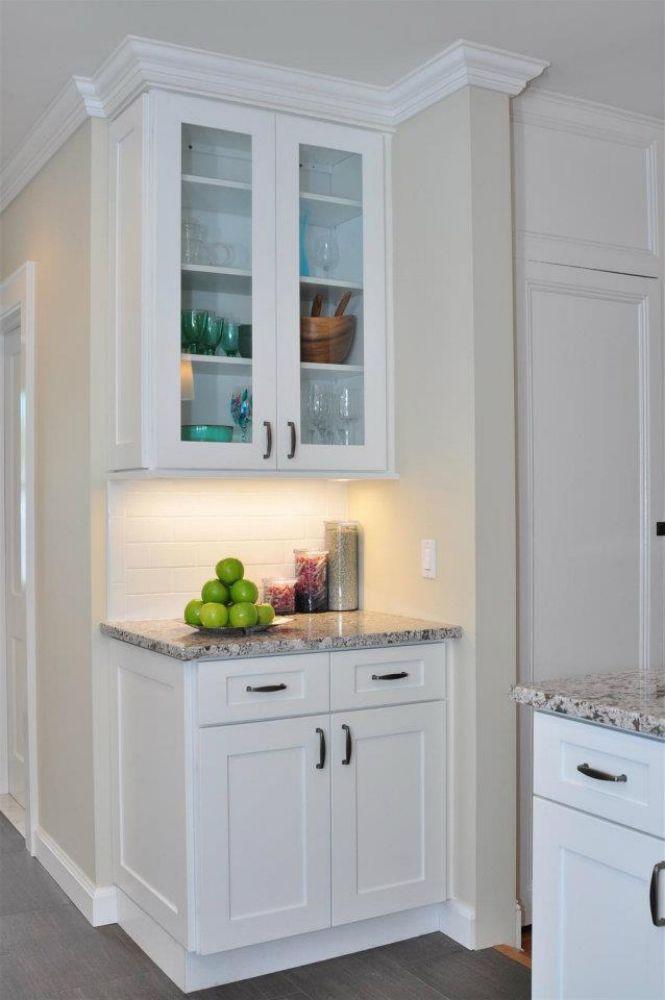Introduction to DIY Installation of Petit White Cabinets
Forevermark Petit White Cabinets are admired for their classic white finish, elegant shaker-style design, and durable construction. One common question homeowners often ask is whether these cabinets can be installed as a DIY project. While professional installation is always an option, many homeowners are interested in DIY installation to save on costs, gain hands-on experience, and have full control over their kitchen or bathroom remodel. Understanding the tools, preparation, and installation steps is key to achieving a successful DIY project.
Assessing Your DIY Readiness
Before attempting to install Petit White Cabinets, it is important to assess your skills and comfort level:
-
Experience with Tools: Are you comfortable using drills, screwdrivers, levels, and clamps?
-
Understanding of Cabinet Layout: Can you read plans, measure accurately, and ensure proper spacing for appliances and countertops?
-
Physical Strength: Cabinets can be heavy, and wall installation may require lifting units into place safely.
-
Attention to Detail: DIY installation requires careful leveling, alignment, and precision to avoid long-term issues.
If you feel confident in these areas, DIY installation is feasible, especially for smaller kitchens.
Pre-Installation Preparation
1. Plan Your Layout
Accurate planning is essential. Measure wall lengths, ceiling heights, and floor levels. Consider the placement of base cabinets, wall cabinets, corners, and appliances. Creating a scaled layout can help avoid mistakes during installation.
2. Check Your Walls and Floors
Petit White Cabinets require solid, level surfaces for proper installation. Use a level to check floors and walls. Uneven surfaces may require shimming to ensure cabinets sit flush and doors align correctly.
3. Gather Tools and Hardware
Tools needed for DIY installation include:
-
Level and measuring tape
-
Drill and screwdriver
-
Clamps and shims
-
Stud finder
-
Pencil for marking
-
Soft cloths for wiping surfaces
The cabinets are pre-drilled and come with standard hardware, simplifying installation and reducing the need for specialized tools.
Pre-Assembled vs. RTA Cabinets
Petit White Cabinets are primarily pre-assembled, which makes DIY installation easier:
-
Time-Saving: Pre-assembled cabinets eliminate the need to assemble boxes on-site.
-
Consistency: Factory-assembled units are square and properly aligned.
-
Durability: Pre-assembled cabinets are strong and ready to mount immediately.
Some units may come as Ready-to-Assemble (RTA), which requires additional assembly and more time but is still suitable for DIYers with patience and careful attention to instructions.
Step-by-Step DIY Installation
1. Locate Wall Studs
Use a stud finder to locate studs along the wall. Mark these points lightly with a pencil to ensure cabinets are anchored securely.
2. Level the Base Cabinets
Place base cabinets along the wall and use shims to adjust height and ensure they are level. Accurate leveling is critical to maintain proper alignment for countertops and wall cabinets.
3. Secure Base Cabinets
Drill screws through the back panel into wall studs. Check alignment with a level and adjust as necessary.
4. Install Wall Cabinets
Support wall cabinets temporarily using a ledger board or a partner. Secure cabinets to studs with screws using pre-drilled holes. Maintain level and plumb alignment during installation.
5. Align and Connect Cabinets
Adjoining cabinets are clamped or screwed together to achieve seamless alignment. Adjust doors, frames, and edges for a flush appearance.
6. Attach Doors, Drawers, and Hardware
Petit White Cabinets may come with pre-attached doors or pre-drilled hinge points. Install knobs, pulls, and soft-close mechanisms according to the included instructions.
7. Final Adjustments
Double-check that all cabinets are level, doors close evenly, drawers operate smoothly, and hardware is secure.
Tips for a Successful DIY Installation
-
Work With a Partner: Base and wall cabinets are easier to handle with two people.
-
Level Frequently: Small errors can compound over multiple cabinets, so check level and plumb at each stage.
-
Use Temporary Supports: Ledger boards or clamps help hold wall cabinets in place during fastening.
-
Protect Cabinet Surfaces: Use soft cloths under tools or shims to prevent scratches.
-
Test Functionality: Before completing installation, ensure doors and drawers operate smoothly.
Potential Challenges in DIY Installation
-
Heavy Cabinets: Pre-assembled cabinets can be bulky and difficult to lift alone.
-
Complex Layouts: Corner cabinets, stacked units, or custom configurations may require more expertise.
-
Precision Requirements: Small mistakes in leveling or alignment can affect the entire kitchen’s appearance.
-
Time Commitment: DIY installation may take longer than professional installation, especially for larger kitchens.
Awareness of these challenges allows homeowners to plan accordingly and avoid frustration.
Benefits of DIY Installation
-
Cost Savings: Avoiding professional installation fees can save hundreds or even thousands of dollars.
-
Satisfaction: Completing a DIY installation provides a sense of accomplishment.
-
Customization: Homeowners can adjust spacing, alignment, and layout exactly to their preference.
-
Control Over Process: DIY allows you to monitor every step, ensuring quality and attention to detail.
When to Consider Professional Installation
While DIY is possible, professional installation may be beneficial in certain scenarios:
-
Large kitchens with many cabinets and appliances
-
Complex layouts with corners, stacked units, or unusual wall dimensions
-
Limited experience with tools or cabinet installation
-
Desire for faster, guaranteed results
Professional installers bring expertise, tools, and efficiency, ensuring a polished and long-lasting result.
Maintenance After Installation
Once Petit White Cabinets are installed, maintaining them is easier when:
-
Cabinets are leveled and aligned correctly
-
Hinges and drawers are adjusted for smooth operation
-
Routine cleaning is performed to prevent dirt or grease buildup
-
Deep cleaning is scheduled every few months to maintain the finish
Proper maintenance ensures that the time and effort invested in DIY installation yield long-term benefits.
Conclusion
Installing Forevermark Petit White Cabinets as a DIY project is achievable for homeowners with basic carpentry skills, proper tools, and careful planning. Pre-assembled units, standardized dimensions, and clear instructions make the process manageable even for first-time installers. While complex layouts, heavy cabinets, or limited DIY experience may warrant professional help, many homeowners successfully complete DIY installations, saving costs and achieving a custom, polished look. By following step-by-step guidelines, checking levels frequently, and taking precautions during handling, DIYers can enjoy the beauty and durability of Petit White Cabinets in their home.
Frequently Asked Questions
Q1: Are Petit White Cabinets suitable for DIY installation?
A: Yes, they are primarily pre-assembled with pre-drilled holes, making them manageable for skilled DIYers.
Q2: What tools do I need for DIY installation?
A: Common tools include a level, drill, screwdriver, shims, clamps, stud finder, and measuring tape.
Q3: Can a single person install these cabinets?
A: Small base cabinets may be manageable alone, but wall cabinets and larger units usually require two people.
Q4: How long does a DIY installation take?
A: Time varies by kitchen size and complexity; small kitchens may take 4–6 hours, while larger kitchens could require 1–2 days.
Q5: When should I hire a professional instead of DIY?
A: Consider professional installation for large kitchens, complex layouts, heavy cabinets, or if you lack confidence with tools and precise measurements.

